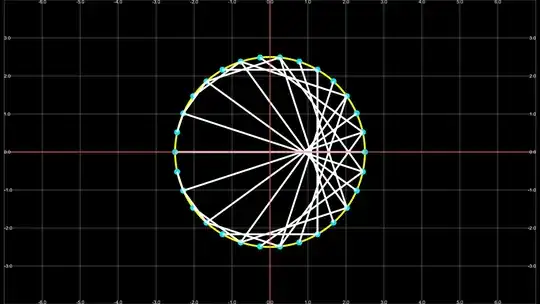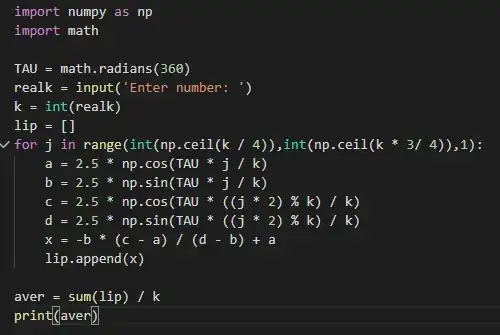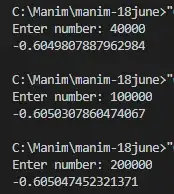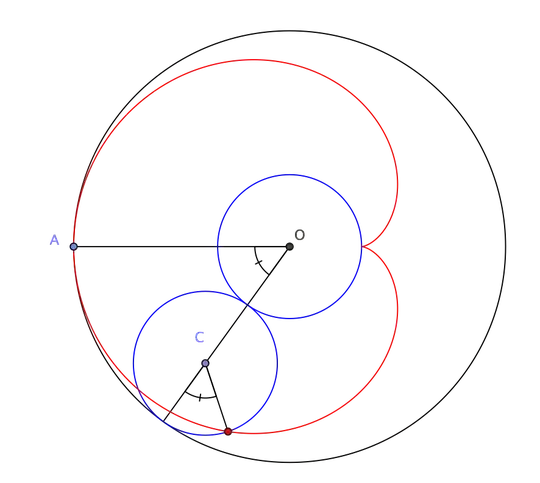There's this nice Mathologer video showing how you can form a cardioid from multiples of $2$ mod $n$. So in the spirit of aspiration in mathematics I set a goal to put my new Manim tool to animate this thing.
I've kind of succeeded(I could've created a hyperlink to my video if I had the knowledge for it) with a circle of radius $2.5\text{cm}$. Btw there's also a better illustration from a more competent Manim user.
But as always the question shifts to $\textit{which cardioid is drawn exactly}$. For the circle radius of $2.5$ the plot looks like this:
$\uparrow n = 30(\text{also translates to number of dots})$
Now I want to know the exact description of that cardioid, at least which two circles would be used to trace it out(since that's what my final animation is supposed to be). At the moment, there's some (fortunate) symmetry on the x axis.
My idea is that if I know where the concave tip of that cardioid is, I'm home free. Because, then the distance from that point to the left intersection of the circle with the x axis is the diameter of the circle used to draw it and from there the parametrization is easy.
But where is that point?
Guaranteed, it lies on the x axis so I need the x co-ordinate only. I tried to calculate it with a Python program to save myself time and it looks like this:
And the output looks very wrong like this:
Well of course I couldn't just pick any two lines that seem to pass through that point and say they intersect at the point of interest(or could I)? Point is, I have no idea. If there's uncertainty in the exact position of that point then maybe we're looking at an infinite series that could possibly have a clean looking answer. But as of now, I'm lost.
Any ideas?



